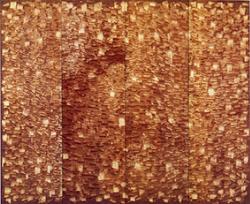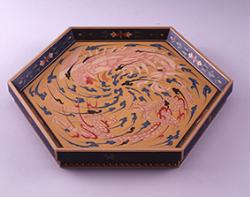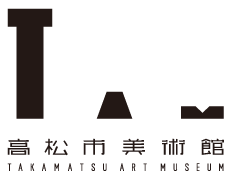Permanent Collection 4th term 2020
PERMANENT
Junuary 5(Tue.),2021-March 28(Sun.),2021
Gallery 1: Artists’ traces in their works
To the viewer, artwork conveys content and meaning through colors and shapes, and at the same time tells of the path the artist takes in their movements. For example, if we look closely at an oil painting, from the thickness or smear of the paint we can see the movements of the painter at that moment in time—how they placed the brush, how much force they applied and in what direction. In this exhibition, we introduce works of art while viewing them as traces left behind by artists.
From LEE Ufan’s 《Cut Up No.97》, in which the surface of a board has been covered in chisel marks, as well as SHIRAGA Kazuo’s 《Ten'isei Soben KoenShaku》, drawn with his feet, we can imagine the movements of the artists from the surface of the work. In contrast, we are also exhibiting work in which traces of movement have been erased, such as MURAKAMI Takashi’s 《Red Rope》, in which paint was sprayed so that no marks remained, and ONISHI Nobuaki’s 《shoha burokku》, which is colored to look exactly like the real thing. In addition, we will invite HAYASHI Aoi as a guest artist to introduce her work which expresses sounds through “lip rubbings”. Let’s try to imagine how the artwork before our eyes was created, and what the process of creating it may have looked like.

LEE Ufan《Cut Up No.97》1972

ISOI Joshin《Hexagonal Incense Tray, Zonsei》c.1940
Gallery 2: Auspicious omen motifs in Sanuki lacquer works
Traditional auspicious designs, such as cranes, turtles, pine, bamboo, and plum blossoms, have often been used not only in paintings and handicrafts, but also in advertisements and other things we see in our daily lives. In this exhibition, we will exhibit and introduce Sanuki Lacquerware pieces in which a variety of auspicious designs can be seen, along with their origins and meanings.
The phoenix, which is the motif of FUJIKAWA Ransai’s 《Confectionary Box, Zonsei》 and ISOI Joshin’s 《Hexagonal Incense Tray, Zonsei》, was originally one of the Four Holy Beasts of ancient China, and is a bird which has long been known to be a lucky omen in Japan. The bats seen in MORI Zodo’s 《Incense Case with Bat Design, Kokaryokuyoh》 and TAKAHASHI Kanzan’s 《Incense Case with Lotus, Orchid and Chrysanthemum Design, Kokaryokuyo》 have been considered animals of congratulations, as one of the characters in their Japanese name has the same pronunciation as the character for “good fortune”. Butterflies have been popular in patterns for kimono and crafts since the Nara period, and are a favorite motif of ISOI Masami’s, often seen in his pieces, such as 《Box with Gromwell Design, Kimma》.
Depending on the artist, there are a variety of expressions and combinations, even of the same auspicious design. Please enjoy seeing how traditional patterns were developed in Sanuki Lacquerware, and the differences between each piece.
Information
Period:
January 5(Tue.),2021-March 28(Sun.),2021
*Gallery 1 March 13,2021-March 28,2021: JAPAN TRADITIONAL Urushi Works EXHIBITION 2021.
Venue:
Permanent Collection Gallery
Closed:
Monday(the following weekday if Monday is a holiday)
Hours:
Monday - Saturday & Holidays: 9:30 - 17:00 (Entry until 16:30)
*Until 19:00 during special exhibitions on Friday and Saturday .
*Last entry is 30 minutes prior to closing.
Organized by:
TAKAMATSU ART MUSEUM
Admission:
【General 】200yen(160yen)
【University students】150yen (120yen)
【High school age or younger/ Seniors 65+】Admission free
※Advance Purchase and Groups of 20 or More Get Discounts (pricing in parenthesis)
※Free admission for those with a physical disability certificate, rehabilitation certificate, or mental disability certificate.
Telephone Inquiry
TAKAMATSU ART MUSEUM
TEL +81-87-823-1711






